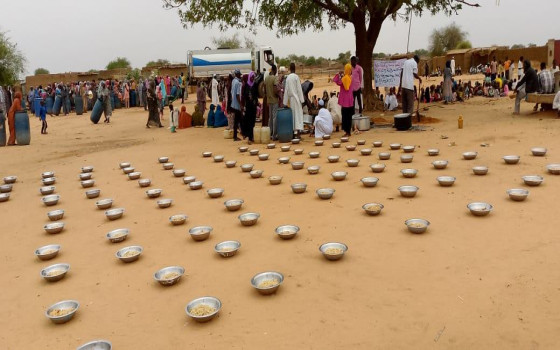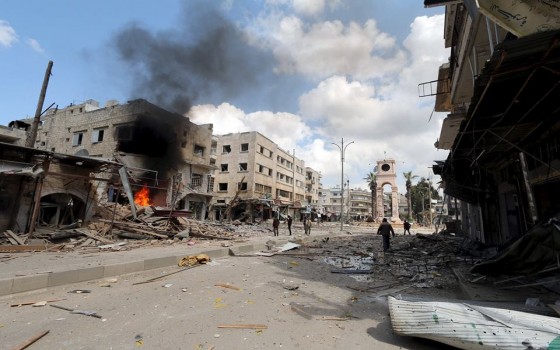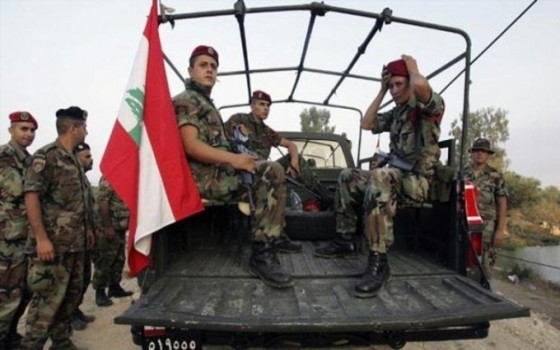
Youth Emergency Rooms Confront Famine in Darfur IDP Camps

- Europe and Arabs
- Monday , 19 August 2024 6:18 AM GMT
Khartoum - New York: Europe and the Arabs
In the midst of the ongoing war in Sudan, voluntary youth initiatives emerged, forming a lifeline for thousands of displaced people who found themselves in the grip of famine and siege. These young people, with their limited capabilities and strong will, confront the hell of war and its repercussions, providing food, water and medicine, treating the wounded, and sheltering the homeless.
On the occasion of World Humanitarian Day, UN News spoke via telephone and voice messages with members of the UN-supported youth emergency rooms in Zamzam and Abu Shouk camps in North Darfur, to convey the picture of what is happening there, especially following the announcement of the outbreak of famine in Zamzam camp, and warnings of similar conditions in the nearby Abu Shouk and Al Salam camps.
Zamzam camp is home to displaced people from the five states of Darfur, in addition to displaced people who fled the conflict in Khartoum, which has led to a significant increase in the camp’s population to nearly half a million people, according to statistics issued by relief agencies. According to the UN daily news bulletin, the camp has become a “mini-Darfur,” according to Mubarak Mohammed Idris, a member of the Zamzam camp emergency room, who said that “emergency rooms emerged from the womb of suffering, and have become a link between organizations and those in need on the ground.”
Communal kitchens as a means to fight famine
Despite the difficult situation, aid organizations do not have access to these camps to provide much-needed aid. For this reason, the youth of the camp’s emergency room are providing food to the hungry. Mubarak Mohammed Idris, a member of the Zamzam camp emergency room, said: "We also have what is known as a collective kitchen where we provide food, around the clock, to more than 46 shelters inside the camp. This helps us alleviate the suffering of the displaced people inside the camp due to the lack of food and the inability of families to feed themselves because they are poor. Children spend their entire day without any food at all. There are some families who go for days without lighting a fire - because they do not have any food to cook - and this is the reason that led to the declaration of famine in the camp, because the camp is besieged and the families do not have anything."
Water shortage exacerbates the risks
Food shortages are not the only challenge facing the residents of Zamzam camp, as the problem of drinking water shortages is another burden for the displaced. Mr. Mubarak Mohamed Idris explains: “All the water wells have gone out of service due to the lack of fuel because the area is surrounded by the Rapid Support Forces. Currently, only two water wells out of eight in the camp are working, so we are also working to provide drinking water. We are suffering greatly to bring water to the camp in light of the clashes and artillery shelling, in addition to the lack of funding. We bring two water trucks containing 200 barrels of water and distribute them to people in 46 centers, but that is not enough.”
Spreading solidarity and cooperation among the displaced
The role of the emergency rooms was not limited to material assistance, but extended to include strengthening solidarity among the displaced, providing shelter and clothing, and evacuating the injured from conflict areas. Mubarak Mohamed Idris says: “We work to provide tarpaulins and shelter supplies during the fall, in addition to insecticide spraying tools and mosquito nets. We also provide support to victims of natural disasters such as floods and torrents. As for the winter, we provide winter clothes for children.”
Abu Shouk Camp: Another Model of Resilience in the Face of Suffering
Abu Shouk Camp is only 22 kilometers away from Zamzam Camp. Here, the same story is repeated. Young volunteers face the same challenges, provide the same services, and even expand their work to include rehabilitating shelters damaged by floods, providing sanitary pads for girls, and working in the field of environmental sanitation.
Mohammed Adam Abdel Latif, a representative of the media committee of the Abu Shouk Camp Emergency Room, says: “We were receiving support from many parties, including the Norwegian Refugee Council - a partner organization of the United Nations - which provided us with support worth $5,000 to buy food supplies to work in the collective kitchen. Through the collective kitchens, we provide food to the shelters that have become completely dependent on us. Recently, we stopped for more than twenty days due to the cessation of support. We received support from charities and non-governmental organizations, including Saba, which helped us buy an ambulance. Many other organizations promised to provide us with support. We also received promises to provide ten collective kitchens.”
Hungry stomachs waiting for food that doesn’t come
Mohamed Adam warns that food prices are rising, forcing many people to eat animal feed, if it is available. He said that “all the signs of famine are very clear” inside the camp, noting that there are “many deaths” due to widespread hunger among the camp’s residents, especially among children, “and we cannot get therapeutic nutrition. We have two therapeutic nutrition centers and they were bombed by the Rapid Support Forces.”
Mohamed Adam also pointed to the high rate of begging among the desperate displaced, while some women are forced to engage in prostitution to be able to feed their children, he said.
Most health centers have closed due to the shelling. The only health center that provides primary health care suffers from a severe shortage of medicines and medical supplies, especially medicines for children under the age of five, according to Mr. Mohamed Adam. In addition to all this, the floods that hit the camp recently destroyed more than 700 homes, he said.












No Comments Found